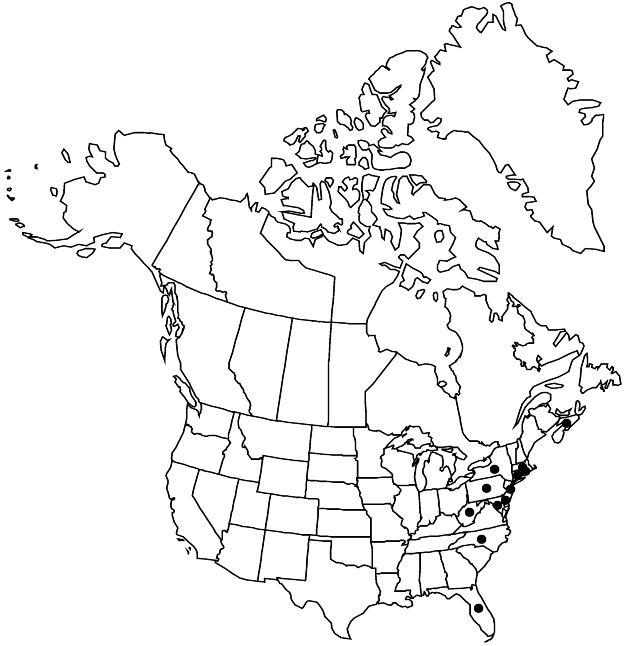Drosera filiformis
Med. Repos., hexade 2, 5: 360. 1808.
Plants forming winter hibernaculae, rosettes 1 cm diam.; stem base bulbous-cormose, composed of expanded petiole base, 1–2 cm, woolly. Leaves erect; stipules adnate to petioles for entire length, 10 mm, margins fimbriate, forming woolly appearance of cormose base; petiole not differentiated from blade; blade filiform, 8–25 (–30) cm × 1 mm, surfaces glandular-hairy, trichomes red to reddish purple, drying dark-brown. Inflorescences 4–12 (–24) -flowered; scapes 6–26 cm, glabrous. Pedicels glandular-pilose. Flowers 10–20 mm diam.; sepals connate basally, oblong to elliptic, 4–7 × 2–2.5 mm, glandular-pilose; petals pink to purple-lavender, broadly ovate, 7–10 (–12) × 5–15 mm, apical margins erose. Capsules 5–6 mm. Seeds black, ellipsoid, abruptly caudate at both ends, 0.5–0.8 mm, coarsely crateriform, pits in 16–20 lines. 2n = 20.
Phenology: Flowering late May–Sep.
Habitat: Exposed shores of freshwater ponds, streamside seepage bogs or fens, interdunal swales, coastal peat bogs, roadside depressions, moist borrow pits
Elevation: 0–40 m
Distribution

N.S., Conn., Del., Fla., Md., Mass., N.J., N.Y., N.C., Pa., R.I., W.Va.
Discussion
Drosera filiformis is disjunct in the outer Coastal Plain, from Nova Scotia and Connecticut to Maryland, southeastern North Carolina, and Bay and Washington counties, Florida. The species has been reported from South Carolina, but no specimens from there have been seen. It is introduced in Caroline County, Virginia, and Preston County, West Virginia, and possibly other localities peripheral to its range; it is short-lived in some localities. B. A. Sorrie (1998b) gave a detailed account of the distribution and habitats of D. filiformis as well as convincing evidence that D. tracyi is a distinct species.
The species is very easy to cultivate, and the cormose-based clumps multiply and may be divided while dormant.
Selected References
None.